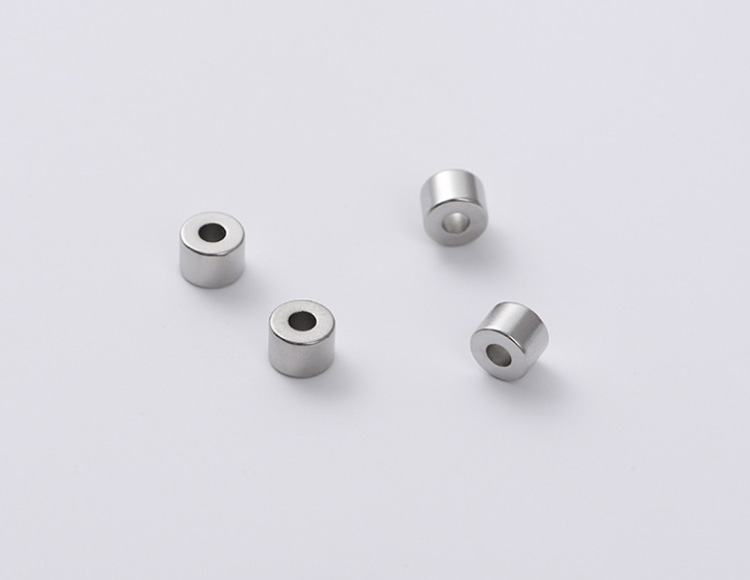Customers say the size of round magnets with holes, often we will ask more, is it a straight hole or countersunk holes, some customers will say, big and small holes, called different, so that often quote the wrong report. How to go to distinguish such round magnets? Today to say.
Round magnets with straight hole magnets and countersunk holes are two common forms of processing NdFeB magnets, and their difference lies mainly in the shape and location of the holes. Straight hole magnets, are holes formed by drilling directly into the magnet material. These holes are usually drilled in the direction of the magnet's axis (from top to bottom). Straight hole magnets can be used to insert shafts or rods to hold or connect other parts. What about countersunk magnets, which are magnets with holes in the magnet material that are sunk below the surface of the magnet using a special process. Unlike straight-hole magnets, countersunk magnets have holes that do not go straight through the entire magnet, but instead lie below the magnet's surface, creating a flat surface. This design can be used to embed screws or other fixing elements so that they do not protrude from the magnet surface.
The picture shows a round neodymium magnet with a straight hole, also called neodymium ring magnets.

Types of screws used for straight and countersunk round magnets:
Straight Hole Round Magnets: can be used with regular cheese head screws or other types of screws that do not require a specific head shape.
Round magnets with countersunk holes: usually use countersunk head screws, which have a tapered head that can be embedded in the countersunk holes of the magnet so that the screw head is flush with the surface of the magnet.
Specific application scenarios:
Round magnets with straight holes: commonly used where a direct pass through fixing is required, such as mounting on a plate or for simple fixing.
Magnets with countersunk holes: Commonly used where smooth surfaces or hidden fixing screws are required, such as in mechanical equipment, furniture components and other applications where a combination of aesthetics and functionality is required.
To summarize, straight hole magnets have holes that penetrate the entire magnet directly from top to bottom, while countersunk hole magnets have holes that form a flat aperture below the surface and do not penetrate the entire magnet. The choice of whether to use a straight or countersunk magnet depends on the specific application requirements, including fixing methods, appearance requirements, and other considerations.
Our company is a magnet manufacturer, magnet quotation are according to your needs, such as size, grade, plating, temperature resistance, hole position, etc. Welcome to inquire.
Related round perforated magnets;
 China Neodymium And Ferrite Magnets Manufacturer & Supplier
China Neodymium And Ferrite Magnets Manufacturer & Supplier 


